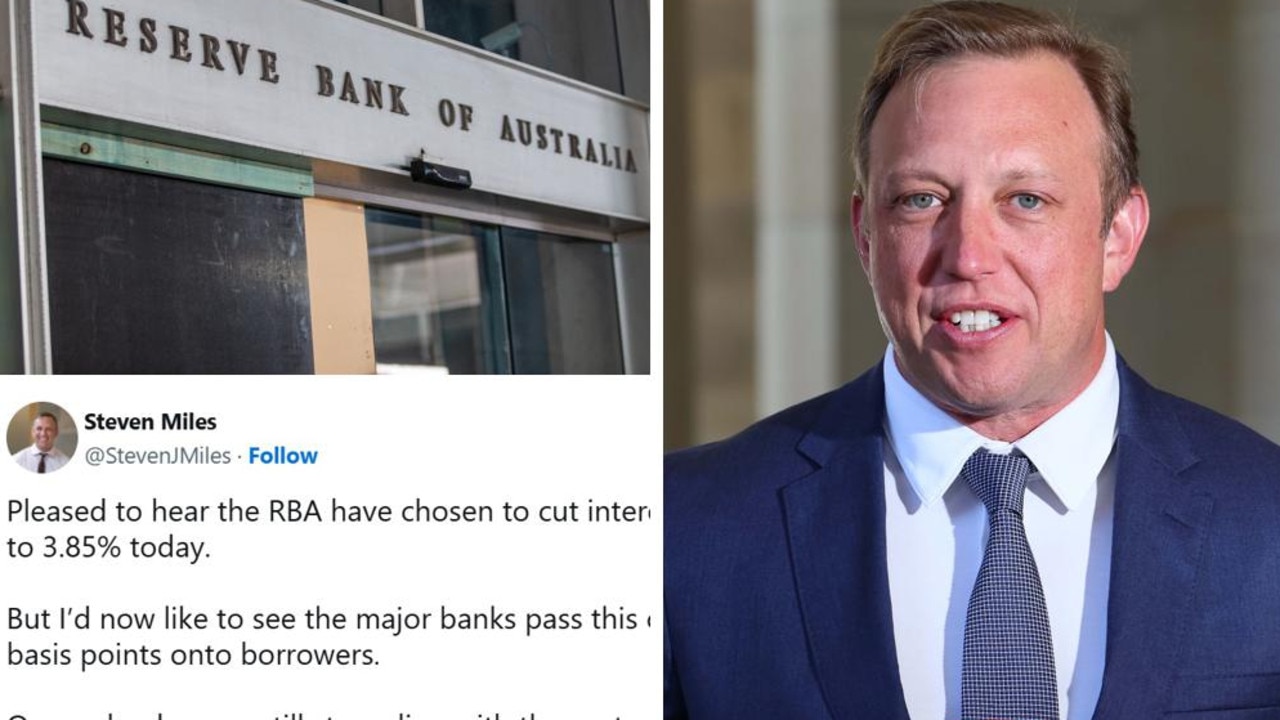Sneaky way to cut your investment tax bill by 17 per cent
Many Aussies pay investment tax on top of their income tax and it’s a whopping amount – but there is a way to make sure it’s a lot less.

Money
Don't miss out on the headlines from Money. Followed categories will be added to My News.
The tax rules in Australia are complex and constantly changing, so making the smartest tax moves is an ongoing battle.
And we pay a lot of tax: According to 2022 tax data, Australia has one of the highest income tax rates in the world – in fact, we are fourth highest only behind Denmark, Iceland and Belgium.
But with this comes opportunity, because the more tax you pay, the more valuable tax deductions become. This means if you’re smart with how you plan and execute on your tax strategy, you can save some serious cash and put yourself into a stronger financial position.
Marginal tax rates
In Australia, we work under a marginal tax rate system, also known as a progressive tax system. The current Australian marginal tax brackets (including Medicare levy) are shown in the table below.
This shows that as your income increases, so does the ‘marginal rate’ of tax you pay. One thing many people find confusing is that the higher marginal tax rates only apply to income earned above each threshold number. This means that even if your income is well into the top marginal tax bracket of $200,000, you still pay no tax on the first $18,200 of your income.
When you receive a pay rise or bonus which raises total income enough to put it into the next tax bracket, it’s common for people to think this higher tax rate applies to your full income. This isn’t the case – the higher marginal tax rate only applies to the amount of income earned within that particular tax bracket.
It is also worth noting that there is no point in the Australian tax system where you end up with less money after tax as a result of earning more income.
You only get one tax rate
Another common area of confusion is around how tax works on your investment income. For any investments you personally own – such as investment accounts in your name, properties owned in your name – all investment income is added to your other assessable income (salary and employment income) and taxed at your marginal tax rate.
This includes interest income from bank accounts and term deposits, rental income on investment properties, capital gains from buying and selling shares, and gains, losses and income from cryptocurrency investments, and any other investment income.
Stream more finance news live & on demand with Flash. 25+ news channels in 1 place. New to Flash? Try 1 month free. Offer ends 31 October, 2022 >

For example, if your salary income is $100,000 each year, and you earn an additional $5000 on interest on a savings account, $5000 in dividend income, and $10,000 in net rental income on an investment property, all these figures add together to your ‘total assessable income’ of $120,000 and you’re taxed accordingly.
You’re taxed the exact same amount as if you earned the $120,000 entirely from employment income, or from investment income, meaning there is no difference to the tax rate you pay on investment income compared to your employment income.
Value of deductions increase with your income
Notwithstanding the above, the more you earn and the higher your marginal tax rate, the more benefit every dollar of tax deductions will be to you. This means that the more you earn, the more valuable it will be for you to maximise your deductions.
To get the best tax outcomes for your current position, understand what deductions you can claim based on your occupation, get tax smart when you invest, and be strategic with how you manage your tax. The less tax you pay, the more you’ll have left to use to get ahead (or maybe just for your next holiday).
Tax rates are different for different entities
As outlined above, all income earned in your personal name is taxed at marginal tax rates. But tax rates are different for income earned in different ‘tax entities’ like superannuation, trusts, and companies.
When you’re in the process of growing your wealth through investing, you’re generally investing new capital each year into your investments, which are in turn generating investment income. Each year you pay tax on this income, then reinvest what’s left to continue growing your investments and wealth.
The implication is that the less tax you pay, the more money you have left to reinvest, and the faster your investments will grow. This means there’s an opportunity to be strategic with where you invest, and one that can make a significant difference to your wealth trajectory.

For example, the maximum tax rate that applies to a company is 30 per cent – significantly lower than the top marginal tax rate of 47 per cent. If you’re already earning a good income that puts you into the top marginal tax bracket, every dollar of investment income you earn will be taxed at 47 per cent.
In comparison, when growing your investments under a company structure, investment income would only have tax applied at a maximum rate of 30 per cent. The result is you hold onto an additional 17 per cent of your investment income which you can then reinvest to grow your investments faster.
With superannuation it gets even better – the maximum tax rate that applies to investment income earned through superannuation is 15 per cent.
Worth noting with both these options is that there are risks and downsides – the cost of setting up and managing an investment company, locking your money away in superannuation, and the time and admin needed to manage a more complicated investment portfolio.
These strategies aren’t for everyone.
But this highlights the potential benefits you can get from being strategic with your investment tax strategy, and how being smart here can pay some serious dividends. Take the time to educate yourself and get some good advice so you make the smartest moves for you.
The wrap
We pay a lot of tax. The tax rules are complex. And it can be overwhelming. But the benefit of getting this right is huge, and something that’s worth taking the time to educate yourself about.
Understand the rules, how they apply to you, and how to use them to your advantage – the result is a faster and easier path to the results you want.
Ben Nash is a finance expert commentator, podcaster, financial adviser and founder of Pivot Wealth, and author of the Amazon best-selling book ‘Get Unstuck: Your guide to creating a life not limited by money’.
Ben has just launched a series of free online money education events to help you get on the front financial foot. You can check out all the details and book your place here.
Disclaimer: The information contained in this article is general in nature and does not take into account your personal objectives, financial situation or needs. Therefore, you should consider whether the information is appropriate to your circumstances before acting on it, and where appropriate, seek professional advice from a finance professional.
Originally published as Sneaky way to cut your investment tax bill by 17 per cent





